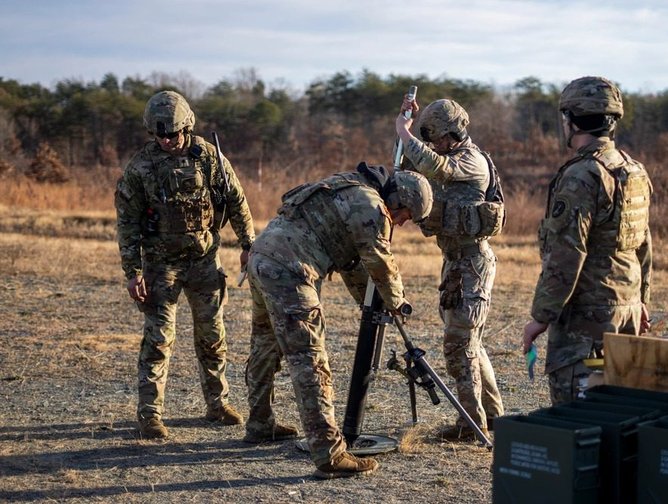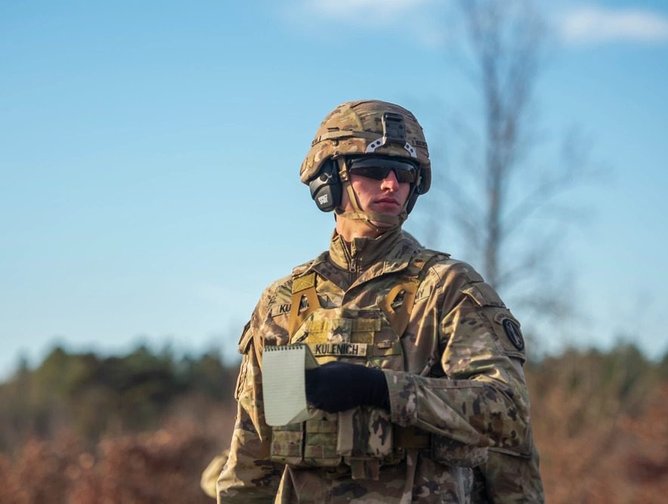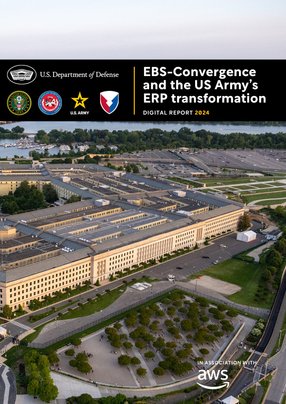A prestigious organisation built on operational excellence, centred around protecting the country and supporting troops on the ground. The US Army is more than just military; it encompasses a number of facets that translate into prosperity for the nation.
At the heart of this is a core leadership that stems from centuries of pride and determination within the US Army and will continue to evolve as it meets one of its most complex yet stimulating operational challenges—digitalisation.
The US Army’s digital transformation has already begun. From finance to logistics, the US Army requires a whole host of services to ensure they are prepared for action at any given moment.
As complexities evolved, enterprise resource planning (ERP) systems were adopted to manage specific functions with their siloes; financial planning solutions separated from those used to ensure logistics operations are carried out precisely—all to ensure that Soldiers are fueled and armed for every eventuality.
Fast-forward to today, and the US Army now uses a number of fragmented processes to meet its varying needs, including component and material sourcing, stocking ammunition for the infantry and spare parts for vehicles.
“Something as simple as being able to track or count ammunition or how many missiles we have becomes a core capability that, if we find ourselves in a large-scale combat operations in Europe or Asia, we need to be able to trust the data that we’re working with to track our inventory,” says Frank Wilde, Multi-Functional Capabilities Team Advisor to the Director at the US Army.
Now, the US Army is undergoing a digital transformation to bring the organisation into the future, combining them in a unified way that will benefit both Soldiers behind the screen as well as those on the ground. The name for this evolutionary project is Enterprise Business Systems – Convergence (EBS-C).
“So that entire organisation is something that's new to the Army because it's cross-functional in nature. We're not looking at the Army's processes really through a given organisation or through a specific lens within the Army. Instead we’re taking a holistic approach—looking at end-to-end financial processes, looking at end-to-end logistics and supply chain.
“To be able to support the US Army moving forward was very appealing in the sense that we could really move the needle both from a business process standpoint, but also from a technical lens as well.”
Wilde is well-equipped with applied knowledge of digital solutions. He understands the need to think critically about the position that the military wants to be in.
EBS-Convergence will merge five legacy ERPs, that cover logistics and financial management business processes for the US Army currently.
“The idea is that we're in a position to build a seamless workflow that spans the US Army, that very much mirrors the private sector’s best-in-class.” Wilde explains.
“Rather than following custom processes and software development that requires a lot of heavy lifting, and expensive maintenance, we want to be in a position that we're using industry best practices.”
The team will leverage best practices found in the private sector, such solutions that are capable of supporting the US Army user base will provide the backbone of the solution to meet those needs.
Adopting this kind of technology will likely provide a huge benefit to the organisation and minimise the amount of work it has to copy in order to digitalise.
Wilde states that there are further pieces to enable the best-in-class outcomes sought after by the US Army. This includes organising change management data, and that of the overall deployment, to keep tabs on the progress of its strategy.
“This is the largest ERP transformation in the history of the US Army. That’s where it’s both exciting but also a challenge, because we have quite a bit of runway to pave different user experiences.”
Aside from the critical data points measured within the processes themselves, key insights will also come from the Soldiers and Civilians using the solution that the US Army sets out to build. Understanding how users are interacting with its digital solutions is majorly important for successfully rolling them out with minimal disruption to military operations.
“Since January 2023, we've been very focused on confirming the current state of processes; what they look like, how they operate, where the pain points are,” says Wilde. “Our current state of mapping is going to be a very deliberate effort to understand the processes as well as the users and commands.”
With new insights, Wilde hopes to work closer with US Army Soldiers and Civilians to understand what their needs are within the overall change management strategy, which is the main focus for the next couple of years to come.
“We want to be in a position to have that critical path over the next 48 to 60 months clearly defined,” says Wilde.
DISCLAIMER: Any quotes or statements from Mr. Frank Wilde present in this content were made as an individual and do not represent the position of the U.S. Army or the U.S. Government. The appearance of Department of Defense (DOD) and Department of the Army (DA) information does not constitute an endorsement, express or implied, by DOD or DA of any nonfederal entity, product or service, including BizClick Technology Magazine or any contractor, product, service or event of BizClick. "The appearance of U.S. Department of Defense (DoD) visual information does not imply or constitute DoD endorsement." Any appearance of commercial advertising and hyperlinks does not constitute endorsement by DOD or the U.S. Army.




******
Make sure you check out the latest edition of FinTech Magazine and also sign up to our global conference series – FinTech LIVE 2024
******
FinTech Magazine is a BizClik brand


